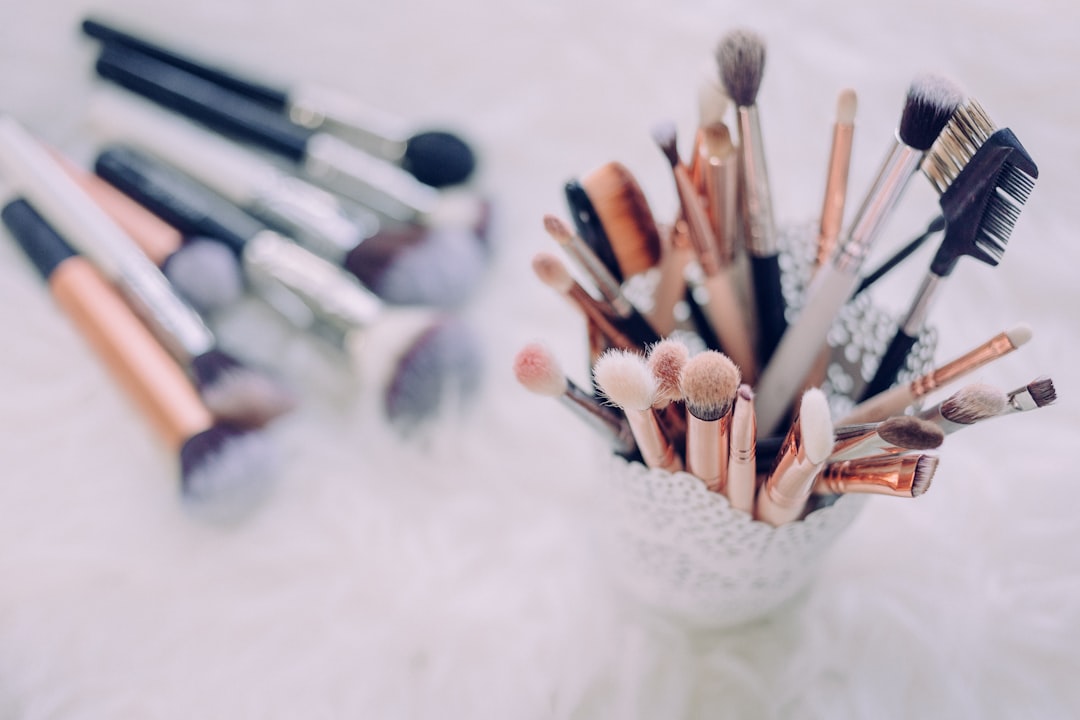
Whiter teeth from home
White teeth are a beauty ideal. They make us look attractive and healthy, while dark discoloration is just as off-putting as the spinach residue between the incisors. We associate yellow teeth with poor dental hygiene, but that is not true at all.
Our teeth are naturally slightly yellowish. As we get older they become darker, and some foods and beverages intensify this effect. White teeth are actually an unnatural goal, but understandable nonetheless. Who wouldn't want to have a radiant smile?
To get a little closer to this smile, you can try to avoid certain foods. The most common culprits are coffee, tea and red wine. These drinks have a strong staining effect. Their colorants are deposited in the enamel surface and discolor the tooth over time. It's a similar story with nicotine. Even intensive brushing doesn't necessarily help to remove the discoloration.
In addition, some fruits such as blueberries, black cherries and saffron also cause unsightly tooth discoloration. Fortunately, all of these discolorations are so-called "external tooth discolorations". They are easier to remove than "internal discolorations".
There are a whole range of options available to whiten your teeth easily from home: whitening toothpaste, activated charcoal, bleaching strips, pens and gels.
This is probably the easiest way to get rid of external tooth discoloration. Simply replace your toothpaste with one that has a whitening effect. You don't have to change your daily routine or schedule extra time in the bathroom.
Whitening toothpaste achieves its effect through tiny, hard particles. They act like a peeling for your teeth and remove the coloring. But be careful! If you apply too much pressure, they also wear away the tooth enamel.
Toothpaste with activated charcoal is currently very popular. It also works with particles that scrub the discoloration from the teeth. However, the particles in the activated charcoal are much coarser. Over time, they roughen the surface of the teeth. Dyes and bacteria can then adhere to them much better.
That's why activated carbon is also available in other forms in which it doesn't work with its abrasive power. What's special about it is that it can absorb dyes and pathogens. That's why it's often used to treat gastrointestinal complaints.
Activated charcoal is therefore better suited as a tablet that is chewed before brushing teeth, or as a powder dissolved in water as a mouthwash.
You simply stick bleaching strips onto your teeth. Read the manufacturer's instructions first. These can vary depending on the product.
At first it is a little complicated to stick the strips on properly. You shouldn't talk with them in your mouth, otherwise they'll fall out again straight away. Often they aren't long enough to whiten all your teeth at once. The bleaching strips are mainly for the teeth that you see when you smile.
The strips only whiten the areas where they rest. They do not treat the spaces between teeth.
Bleaching pens work in a similar way to strips. You simply paint the active ingredient directly onto your teeth and then brush it off again after the exposure time.
The problem is that the lips and tongue quickly remove the active ingredient. When brushing it on, you can easily accidentally get it on your gums, especially when it's the outer teeth. Since the active ingredient isn't meant to come into contact with the skin, it quickly causes irritation there.
To prevent this, it is best to grin like a Cheshire cat during and after applying the product. Alternatively, use your fingers to keep your lips away from your teeth. After the product has taken effect, brush your teeth thoroughly. This will prevent irritation.
Bleaching gels are a little more complicated to use. They usually come with a dental tray into which you apply the gel. You then put the tray in and shine the LED light provided on your teeth. The light intensifies the bleaching effect.
The tray comes out after ten to 20 minutes. The results are visible after just a few days. This also means that you only have to change your daily routine for a short time to get whiter teeth.
In addition to foods that darken your teeth, there are also those that have the opposite effect. These include pineapples, apples, carrots and nuts.
In pineapple, the enzyme bromelain is responsible for the whitening effect. It breaks down proteins that tend to build up on teeth as plaque in the mouth. It breaks down existing plaque in the same way.
Apples help to break down discoloration thanks to their fruit acid. Before the acid attacks your tooth enamel, saliva washes it away.
Carrots are so crunchy that they clean your teeth when you chew them. They also contain a lot of vitamin A, which supports the immune system and keeps skin and mucous membranes healthy.
Nuts also remove impurities due to their hardness and provide you with calcium. This mineral strengthens your teeth.
Ideally, you should go to the dentist before bleaching at home. He will determine whether home bleaching will be successful for you at all. While you are there, it is best to have a professional teeth cleaning. Your dentist will remove superficial discoloration directly and prepare your teeth perfectly for your plan. Perhaps the teeth cleaning will even be enough to give you a radiant smile again?
Often you cannot get rid of internal tooth discoloration by bleaching yourself. The only solution is professional bleaching at the dentist. He will determine whether this makes sense before the treatment. Tooth decay, thin tooth enamel and leaky fillings are reasons against in-office bleaching.
Every bleaching treatment, even if you do it alone, involves risks. If the treatment causes pain or you no longer feel comfortable with it, stop it and see your dentist. Healthy, slightly yellow teeth are much better than bright white, broken ones that no longer make you smile.
This is hardly possible, unless you never drink coffee, tea, etc. again after the bleaching. Little by little, colorants will build up on your teeth again and you will have to repeat the whole process. As you get older, the thinning enamel also makes discoloration more visible.
So having eternally white teeth is an unrealistic idea. Nobody has them, so you are certainly not alone. If necessary, you can just get out the whitening toothpaste and bleaching pens. Or you can smile with confidence without these aids.
Our teeth are naturally slightly yellowish. As we get older they become darker, and some foods and beverages intensify this effect. White teeth are actually an unnatural goal, but understandable nonetheless. Who wouldn't want to have a radiant smile?
These foods and beverages discolor teeth
To get a little closer to this smile, you can try to avoid certain foods. The most common culprits are coffee, tea and red wine. These drinks have a strong staining effect. Their colorants are deposited in the enamel surface and discolor the tooth over time. It's a similar story with nicotine. Even intensive brushing doesn't necessarily help to remove the discoloration.
In addition, some fruits such as blueberries, black cherries and saffron also cause unsightly tooth discoloration. Fortunately, all of these discolorations are so-called "external tooth discolorations". They are easier to remove than "internal discolorations".
Whiter teeth without a visit to the dentist
There are a whole range of options available to whiten your teeth easily from home: whitening toothpaste, activated charcoal, bleaching strips, pens and gels.
Whitening toothpaste
This is probably the easiest way to get rid of external tooth discoloration. Simply replace your toothpaste with one that has a whitening effect. You don't have to change your daily routine or schedule extra time in the bathroom.
Whitening toothpaste achieves its effect through tiny, hard particles. They act like a peeling for your teeth and remove the coloring. But be careful! If you apply too much pressure, they also wear away the tooth enamel.
Activated carbon
Toothpaste with activated charcoal is currently very popular. It also works with particles that scrub the discoloration from the teeth. However, the particles in the activated charcoal are much coarser. Over time, they roughen the surface of the teeth. Dyes and bacteria can then adhere to them much better.
That's why activated carbon is also available in other forms in which it doesn't work with its abrasive power. What's special about it is that it can absorb dyes and pathogens. That's why it's often used to treat gastrointestinal complaints.
Activated charcoal is therefore better suited as a tablet that is chewed before brushing teeth, or as a powder dissolved in water as a mouthwash.
Bleaching strips
You simply stick bleaching strips onto your teeth. Read the manufacturer's instructions first. These can vary depending on the product.
At first it is a little complicated to stick the strips on properly. You shouldn't talk with them in your mouth, otherwise they'll fall out again straight away. Often they aren't long enough to whiten all your teeth at once. The bleaching strips are mainly for the teeth that you see when you smile.
The strips only whiten the areas where they rest. They do not treat the spaces between teeth.
Bleaching pens
Bleaching pens work in a similar way to strips. You simply paint the active ingredient directly onto your teeth and then brush it off again after the exposure time.
The problem is that the lips and tongue quickly remove the active ingredient. When brushing it on, you can easily accidentally get it on your gums, especially when it's the outer teeth. Since the active ingredient isn't meant to come into contact with the skin, it quickly causes irritation there.
To prevent this, it is best to grin like a Cheshire cat during and after applying the product. Alternatively, use your fingers to keep your lips away from your teeth. After the product has taken effect, brush your teeth thoroughly. This will prevent irritation.
Bleaching gels
Bleaching gels are a little more complicated to use. They usually come with a dental tray into which you apply the gel. You then put the tray in and shine the LED light provided on your teeth. The light intensifies the bleaching effect.
The tray comes out after ten to 20 minutes. The results are visible after just a few days. This also means that you only have to change your daily routine for a short time to get whiter teeth.
Foods that whiten teeth
In addition to foods that darken your teeth, there are also those that have the opposite effect. These include pineapples, apples, carrots and nuts.
In pineapple, the enzyme bromelain is responsible for the whitening effect. It breaks down proteins that tend to build up on teeth as plaque in the mouth. It breaks down existing plaque in the same way.
Apples help to break down discoloration thanks to their fruit acid. Before the acid attacks your tooth enamel, saliva washes it away.
Carrots are so crunchy that they clean your teeth when you chew them. They also contain a lot of vitamin A, which supports the immune system and keeps skin and mucous membranes healthy.
Nuts also remove impurities due to their hardness and provide you with calcium. This mineral strengthens your teeth.
When is the only thing that can help?
Ideally, you should go to the dentist before bleaching at home. He will determine whether home bleaching will be successful for you at all. While you are there, it is best to have a professional teeth cleaning. Your dentist will remove superficial discoloration directly and prepare your teeth perfectly for your plan. Perhaps the teeth cleaning will even be enough to give you a radiant smile again?
Often you cannot get rid of internal tooth discoloration by bleaching yourself. The only solution is professional bleaching at the dentist. He will determine whether this makes sense before the treatment. Tooth decay, thin tooth enamel and leaky fillings are reasons against in-office bleaching.
Risks of bleaching
Every bleaching treatment, even if you do it alone, involves risks. If the treatment causes pain or you no longer feel comfortable with it, stop it and see your dentist. Healthy, slightly yellow teeth are much better than bright white, broken ones that no longer make you smile.
Bright white teeth forever?
This is hardly possible, unless you never drink coffee, tea, etc. again after the bleaching. Little by little, colorants will build up on your teeth again and you will have to repeat the whole process. As you get older, the thinning enamel also makes discoloration more visible.
So having eternally white teeth is an unrealistic idea. Nobody has them, so you are certainly not alone. If necessary, you can just get out the whitening toothpaste and bleaching pens. Or you can smile with confidence without these aids.
Previous post
Small dents – big impact on self-esteem
Next post







